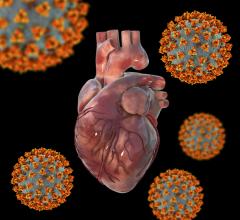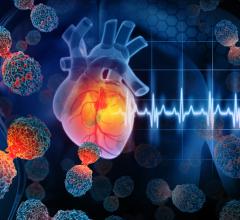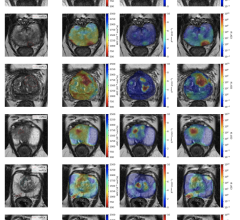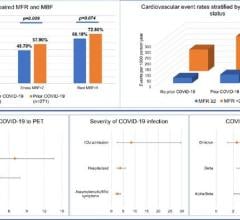
A view from our video analytics panel this past month, showing India as the biggest source of traffic and showing three of the top performing videos.
Sometimes it takes a major shift is the world to see things differently. As editor of DAIC, I often wonder if the content we produce actually helps cardiologists or other physicians with patient care. We pay close attention to analytics so we know what people have an interest in, but we are never sure if it is something they are actually applying to patient care.
With the recent massive surge in COVID cases in India, we noticed a major spike in readers from that country concentrated on our COVID-19 content. In fact, traffic from India to our websites surpassed U.S. traffic starting in April, the first time ever that an audience from outside the U.S. became the majority driver of pageviews over U.S. readers. In the past month, our COVID-19 videos on DAIC and ITN had more than 18,000 pageviews. DAIC's most accessed top 10 articles articles in May included more than 30,000 pageviews just for COVID article content, with most of these being written last year during the first three U.S. COVID waves.
In particular, the two biggest areas of Indian traffic was in radiology findings for COVID, and the use of extracorporeal membrane oxygenation (ECMO) in supporting severely ill COVID patients when ventilators were not enough, or the patient requiring hemodynamic support due to organ failure.
I had a video interview last September with Ryan Barbaro, M.D., clinical assistant professor, pediatric critical care medicine, University of Michigan, and chair of the Extracorporeal Life Support Organization (ELSO) Registry Committee. He was an author of a study using the ELSO data on ECMO used to support critically ill COVID-19 patients. The study confirmed ECMO provides a survival benefit in appropriately selected patients. It was big news at the time because it validated what most large U.S. hospitals were already doing in attempts to save the sickest patients who were crashing hemodynamically and/or needed additional pulmonary support because their lungs were too damaged to get enough oxygen from ventilators.
As of January 2021, that video's traffic slowed to 1-3 views a day, but in late April this rapidly increased to more than 200 views a day. This spike in traffic was traced back to physicians in India looking for information on how to best treat severe COVID cases. Spikes were seen in a lot of our COVID coverage content, especially in videos on how U.S. centers are caring for these patients.
As of February 2021, there were more than 87,000 studies published on COVID-19 in the medical journals. The data from this vast number of studies varies from very good to very poor. Most of the data adds to the overall knowledge base on COVID, but few of these studies offer a definitive answer. A large number of these papers were single-center case studies or are too underpowered to show a clear clinical answer.
With this "drinking from a fire hose" feeling many clinicians have regarding COVID information, I feel human nature takes hold and people do what they always do when they have a question and need a quick answer — they ask their peers and trusted colleagues. But for those short of experienced peers, some may turn to the next best thing, which is an experienced peer sharing data and their own experiences first hand in a video.
As I sit here in my guest bedroom that was hastily converted into a home office more than a year ago, I often find myself asking what can I do to help make a difference in this fight. The answer is what I have been doing all along, produce COVID content that is practical for physicians and hospital departments to use in decision-making as they try to find the right answers as best they can. These analytics tell me we have done our small part and I hope it enabled someone on the other side of the planet to help their patients during an emergent situation.
As an editor that covers new cutting-edge medical technology, I realized this week that it is sometimes the simple tech we overlook that might be able to make difference. In this case, a home internet connection and a laptop computer in a small guest bedroom.
DAIC and its sister radiology magazine ITN have combined reached more than 2.6 million pageviews with just its COVID-19 content over the past year and half.
Here are some of the pieces of content our comrades in arms in India are looking at:
VIDEO: ECMO Hemodynamic Support Effective in Sickest COVID-19 Patients — Interview with Ryan Barbaro, M.D.
ECMO Support Found Effective in Sickest of COVID-19 Patients
Kawasaki-like Inflammatory Disease Affects Children With COVID-19
VIDEO: Overview of Multisystem Inflammatory Syndrome in Children (MIS-C) in COVID-19 Exposed Children — Interview with Deepika Thacker, M.D.
VIDEO: How to Image COVID-19 and Radiological Presentations of the Virus
Addressing Atrial Fibrillation in the World of COVID-19
VIDEO: What Does COVID-19 Look Like in Lung CT Scans
Overview of Trials for Anticoagulation Therapy for COVID-19 Patients
COVID-19 Therapy Drug Azithromycin May Increase Risk for Cardiac Events
The Long-term Cardiovascular Impact of COVID-19
The Cardiovascular Impact of COVID-19
PHOTO GALLERY: How COVID-19 Appears on Medical Imaging
VIDEO: COVID Vaccine Adenapathy Can Last Up to 10 Weeks — Interview with Yael Eshet, M.D.
VIDEO: COVID-19 Pneumonia Chest CT Scan Scroll Through
VIDEO: COVID Vaccine May Cause Enlarged Lymph Nodes on Mammograms — Interview with Constance "Connie" Lehman, M.D.



 March 20, 2024
March 20, 2024 









